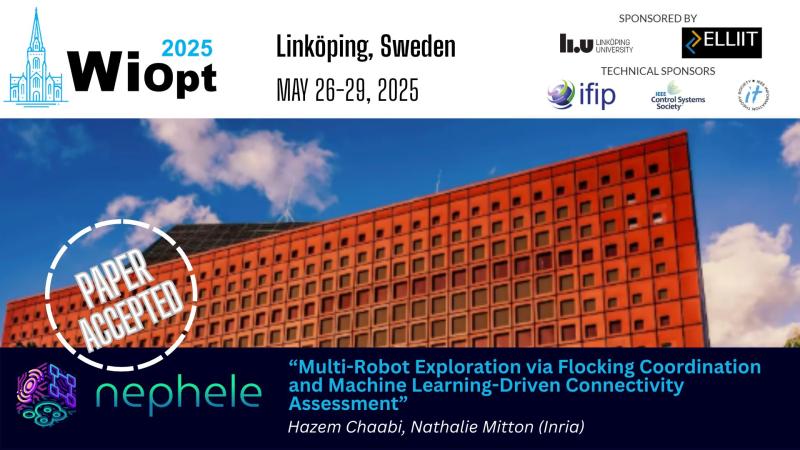
The paper “Multi-Robot Exploration via Flocking Coordination and Machine Learning-Driven Connectivity Assessment” by Hazem Chaabi and Nathalie Mitton from Inria - was accepted by WiOpt 2025 - 23rd International Symposium on Modeling and Optimization in Mobile, Ad hoc, and Wireless Networks - and presented on May 2025 in Linköping, Sweden.
WiOpt 2025 showcased research contributions from different fields in networks. It targeted original and high-quality contribution related to modeling, performance evaluation, and optimization of networks. The focus included but was not limited to mobile networks, edge computing, intelligent networks, content-driven networks, cognitive networks, vehicular networks, robotic systems, and Internet.
This paper introduces a distributed multi-robot exploration system that combines bio-inspired flocking dynamics with machine learning-powered connectivity prediction to enable efficient unknown environment mapping while maintaining robust communication networks. Designed for emergency response scenarios where operational timelines and network reliability are critical, the approach enriches a previous work to implement a role-adaptive framework in which robots dynamically alternate between exploration-focused and connectivity reinforcement behaviors based on real-time signal strength assessments. Explorers employ frontier detection to explore the unknown areas enhanced with RSSI-aware frontier choosing mechanism, while supporters autonomously position themselves using Flocking inspired behavior, forming communication relays. A comparative evaluation of machine learning models trained on FIT-IoT-Lab-collected signal propagation data enables the system to predict RSSI values in different environments. The system’s innovation lies in its integration of flocking-based swarm coordination with data-driven connectivity prediction, addressing the challenge of maintaining network stability while exploring unknown areas efficiently. In addition, the system is designed to operate within the strict computational constraints typical of embedded robotic platforms, leveraging lightweight machine learning models that enable real-time connectivity predictions.